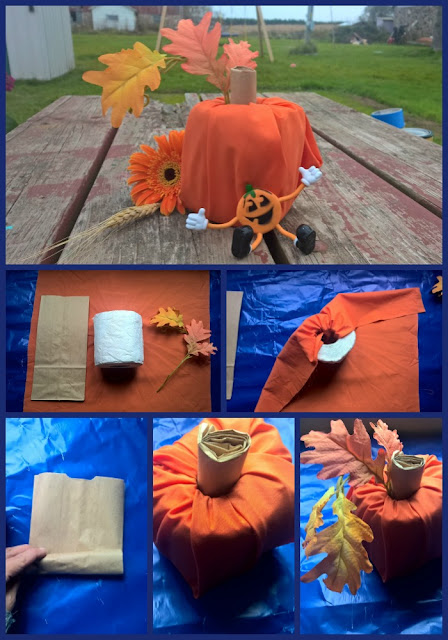I discovered a unique, but speedy, idea for a Halloween centerpiece or decoration.
 |
| An easy Halloween pumpkin made with a roll of toilet paper and a square of fabric. |
I was going through some Halloween stuff that used to belong to my hubby's grandma, and came across a cute little pumpkin. I set it aside, thinking I'd use it to decorate the kitchen table, and started decorating the yard. While I was busy at work, one of my toddlers found the pumpkin, and took it upon herself to dismantle it.
I was surprised to find that the pumpkin was actually nothing more than a roll of toilet paper wrapped in fabric! I thought it was a neat idea, especially if you needed a last minute decoration. Even if you didn't have any orange fabric on hand, I think other colors would work, and maybe even tissue paper could be substituted.
All you need is:
1 roll of toilet paper
An approximately 18" inch square of fabric
A small brown paper bag, or other brown or green piece of paper
Optional decorative leaves--leaves from outside would probably even work
You just set the roll of toilet paper on the center of the fabric, and tuck each corner into the middle of the toilet paper tube. Then, you roll up the brown paper bag to make a stem, and stick it in the hole, along with leaves for extra embellishment.
The pumpkin takes maybe 15 minutes to put together, and once Halloween is over, you can put the toilet paper back in the bathroom, and save the fabric and stem for another use, or even for Halloween next year.
What a cool idea!
This comment has been removed by the author.
ReplyDelete